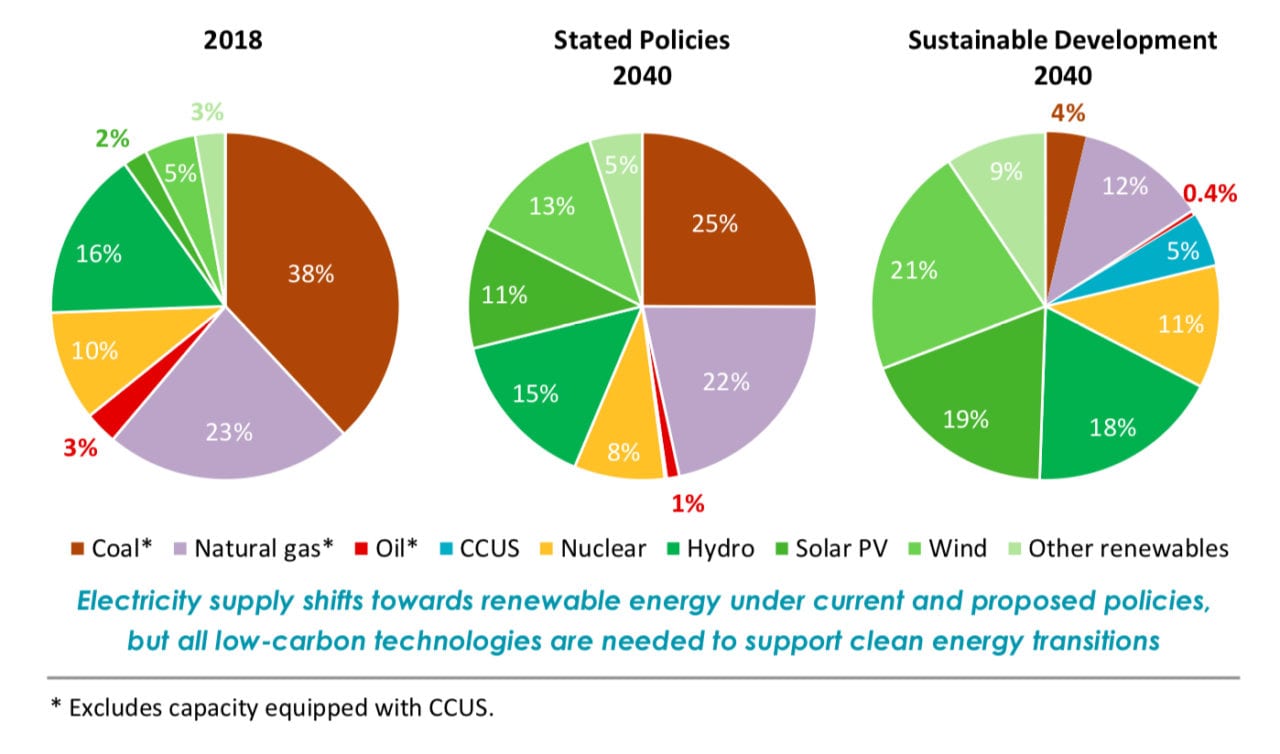Identifying Key Business Growth Areas In The Country

Table of Contents
2. Analyzing Macroeconomic Indicators for Business Growth in the United States
Understanding GDP Growth and Sectoral Contributions
Analyzing the Gross Domestic Product (GDP) growth rate provides a broad overview of the U.S. economy's health. However, a deeper dive into sectoral contributions reveals specific high-growth industries. By examining which sectors are experiencing the most significant growth, businesses can identify promising avenues for expansion.
-
High-growth sectors in the U.S.: The technology sector, particularly software development, artificial intelligence, and cybersecurity, continues to show robust growth. Renewable energy, driven by government incentives and increasing environmental concerns, is another area experiencing significant expansion. Furthermore, the tourism and hospitality sectors, while impacted by recent events, are showing signs of recovery and significant growth potential in specific regions.
-
Data Source: Data on GDP growth and sectoral contributions can be found on the Bureau of Economic Analysis (BEA) website ().
Inflation Rates and Their Impact on Business Decisions
Inflation significantly impacts business planning and investment strategies. High inflation erodes purchasing power and increases input costs, impacting profitability. Understanding current and projected inflation rates is paramount for effective financial planning.
-
Strategies to mitigate inflation risks: Businesses can employ strategies such as hedging against inflation using derivative instruments, increasing prices strategically, and focusing on cost-efficient operations. Diversification into less inflation-sensitive sectors can also be a beneficial approach.
-
Inflation Forecasts: The Federal Reserve regularly publishes inflation forecasts, providing valuable insights for business decision-making.
Government Policies and Business Incentives
Government policies play a crucial role in shaping the business landscape. Tax breaks, subsidies, and infrastructure development initiatives can significantly impact specific sectors. Understanding these policies is essential for identifying areas with favorable regulatory environments.
-
Examples of supportive government policies in the U.S.: The Inflation Reduction Act includes substantial tax credits for renewable energy investments, stimulating growth in this sector. Various state and local governments offer incentives for businesses relocating or expanding within their jurisdictions.
-
Government Resources: Information on government policies and incentives can be found on the websites of relevant agencies, such as the Internal Revenue Service (IRS) and the Small Business Administration (SBA).
2.2. Identifying Emerging Consumer Trends and Market Demands
Analyzing Demographics and Changing Consumer Preferences
Demographic shifts significantly influence consumer demand. Understanding changes in population size, age distribution, and income levels provides valuable insights into future market trends.
-
Emerging consumer trends in the U.S.: The increasing demand for eco-friendly and sustainable products reflects growing environmental awareness. The rise of e-commerce and the continued growth in the demand for online services highlight the importance of digital strategies. Furthermore, a growing focus on health and wellness is driving demand in related sectors.
-
Data Sources: Data on demographics and consumer preferences can be found through market research firms like Nielsen and Statista, as well as government census data.
Leveraging Market Research and Data Analytics
Utilizing market research tools and data analytics is crucial for identifying unmet needs and potential opportunities. These tools provide valuable insights into consumer behavior, preferences, and market dynamics.
-
Useful market research tools and techniques: Surveys, focus groups, social media listening, and data analytics platforms provide a comprehensive view of the market.
-
Understanding Consumer Behavior: Analyzing consumer purchasing patterns, brand loyalty, and online behavior is crucial for creating effective marketing and product development strategies.
Exploring Niche Markets and Untapped Potential
Focusing on niche markets can provide significant advantages, including reduced competition and the ability to cater to specific customer needs.
-
Niche markets showing significant growth potential in the U.S.: The market for personalized healthcare, specialized pet products, and sustainable fashion are examples of growing niche markets.
-
Advantages of niche markets: Lower competition, higher profit margins, and the ability to build strong customer loyalty are key benefits of focusing on niche markets.
2.3. Assessing Infrastructure and Technological Advancements
The Role of Infrastructure in Business Growth
Robust infrastructure—transportation, communication, and energy—is essential for business success. Improvements in infrastructure create new opportunities and facilitate economic growth.
-
How infrastructure improvements create business opportunities: Improved transportation networks facilitate efficient supply chains, while reliable communication infrastructure supports digital business operations.
-
Infrastructure Developments in the U.S.: Investments in broadband internet access, improved highway systems, and renewable energy infrastructure are creating opportunities for businesses in various sectors.
Technological Advancements and Their Impact
Technological advancements are transforming business processes and driving innovation. Adapting to these changes is crucial for remaining competitive.
-
Examples of technological advancements creating business growth in the U.S.: Automation, artificial intelligence, and the Internet of Things (IoT) are transforming various industries, creating opportunities for innovative businesses.
-
Importance of Adapting to Technological Changes: Embracing new technologies, investing in digital transformation, and upskilling employees are critical for long-term success.
3. Conclusion: Strategic Growth Through Identifying Key Business Areas in the United States
Identifying key business growth areas in the United States requires a multifaceted approach encompassing macroeconomic analysis, consumer trend identification, and infrastructure assessment. By understanding GDP growth, inflation rates, government policies, consumer preferences, technological advancements, and infrastructure development, businesses can make informed decisions about expansion and investment. Proactively identifying and capitalizing on these key growth areas is crucial for achieving sustainable success. Conduct thorough research, leverage available data, and strategically plan your business expansion by identifying key business growth areas in the United States to achieve sustainable competitive advantage and maximize profitability. Utilize the insights provided in this article to make informed decisions and navigate the dynamic U.S. market effectively.

Featured Posts
-
 Abu Dhabi Pass 10 Gb Sim And 15 Discount On Top Attractions
Apr 28, 2025
Abu Dhabi Pass 10 Gb Sim And 15 Discount On Top Attractions
Apr 28, 2025 -
 Richard Jeffersons Espn News Segment Le Bron James Reaction
Apr 28, 2025
Richard Jeffersons Espn News Segment Le Bron James Reaction
Apr 28, 2025 -
 Key Points From Trumps Time Interview Canada Annexation Claims Xi Calls And Third Term Discussion
Apr 28, 2025
Key Points From Trumps Time Interview Canada Annexation Claims Xi Calls And Third Term Discussion
Apr 28, 2025 -
 Southeast Asia Energy Market Opportunities For Canadian Businesses
Apr 28, 2025
Southeast Asia Energy Market Opportunities For Canadian Businesses
Apr 28, 2025 -
 Fn Abwzby Brnamj Almerd Fy 19 Nwfmbr
Apr 28, 2025
Fn Abwzby Brnamj Almerd Fy 19 Nwfmbr
Apr 28, 2025
